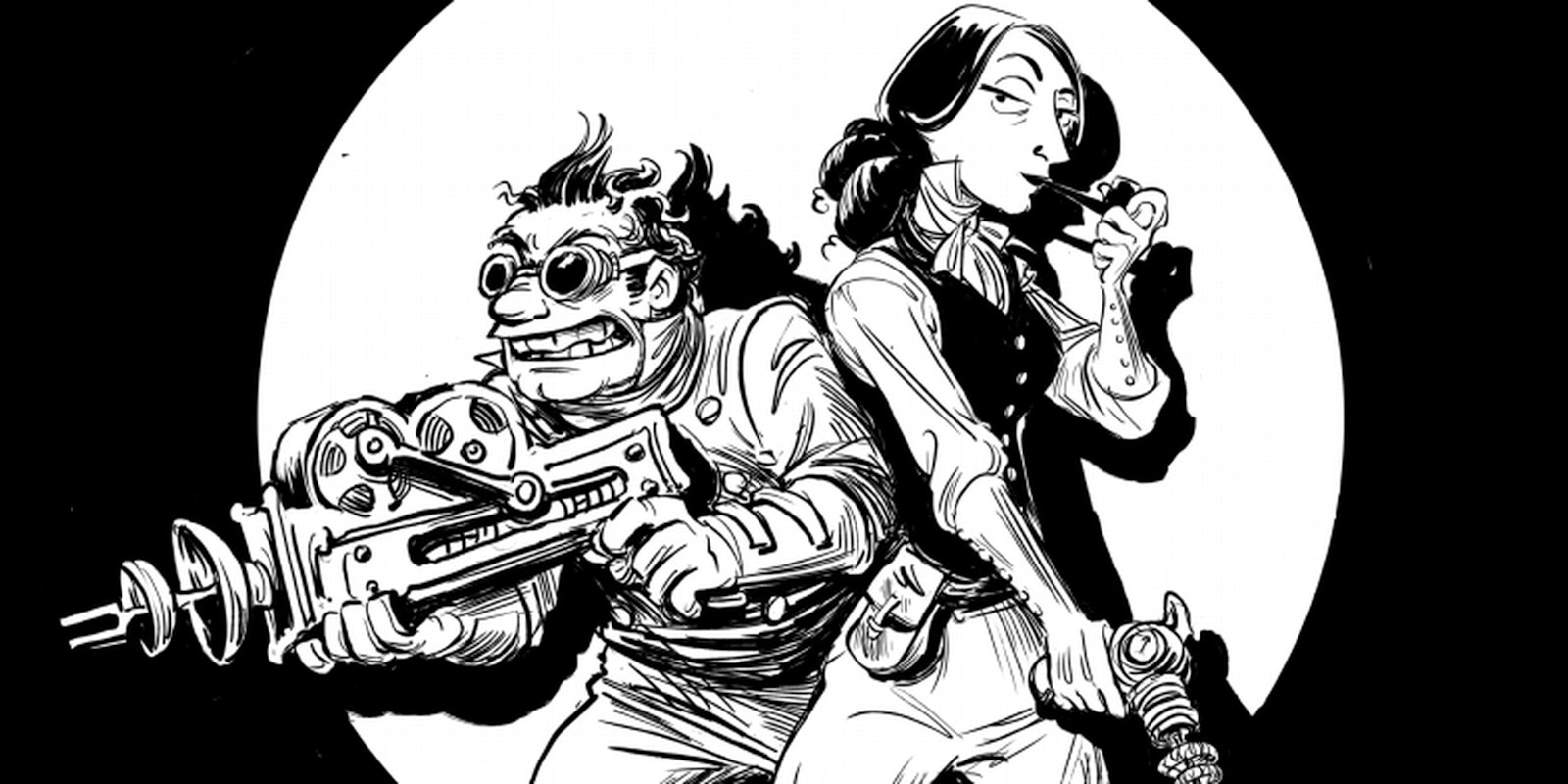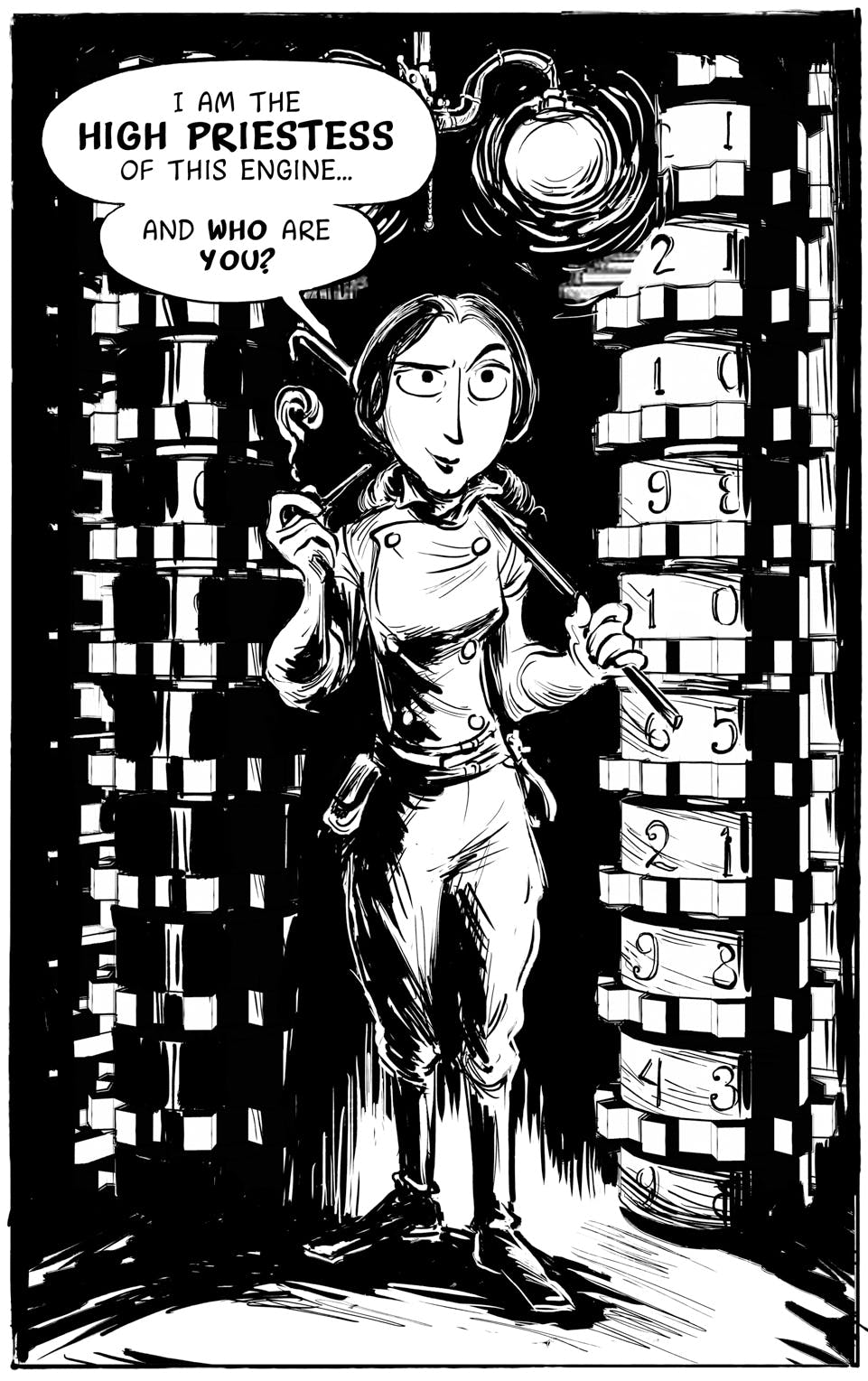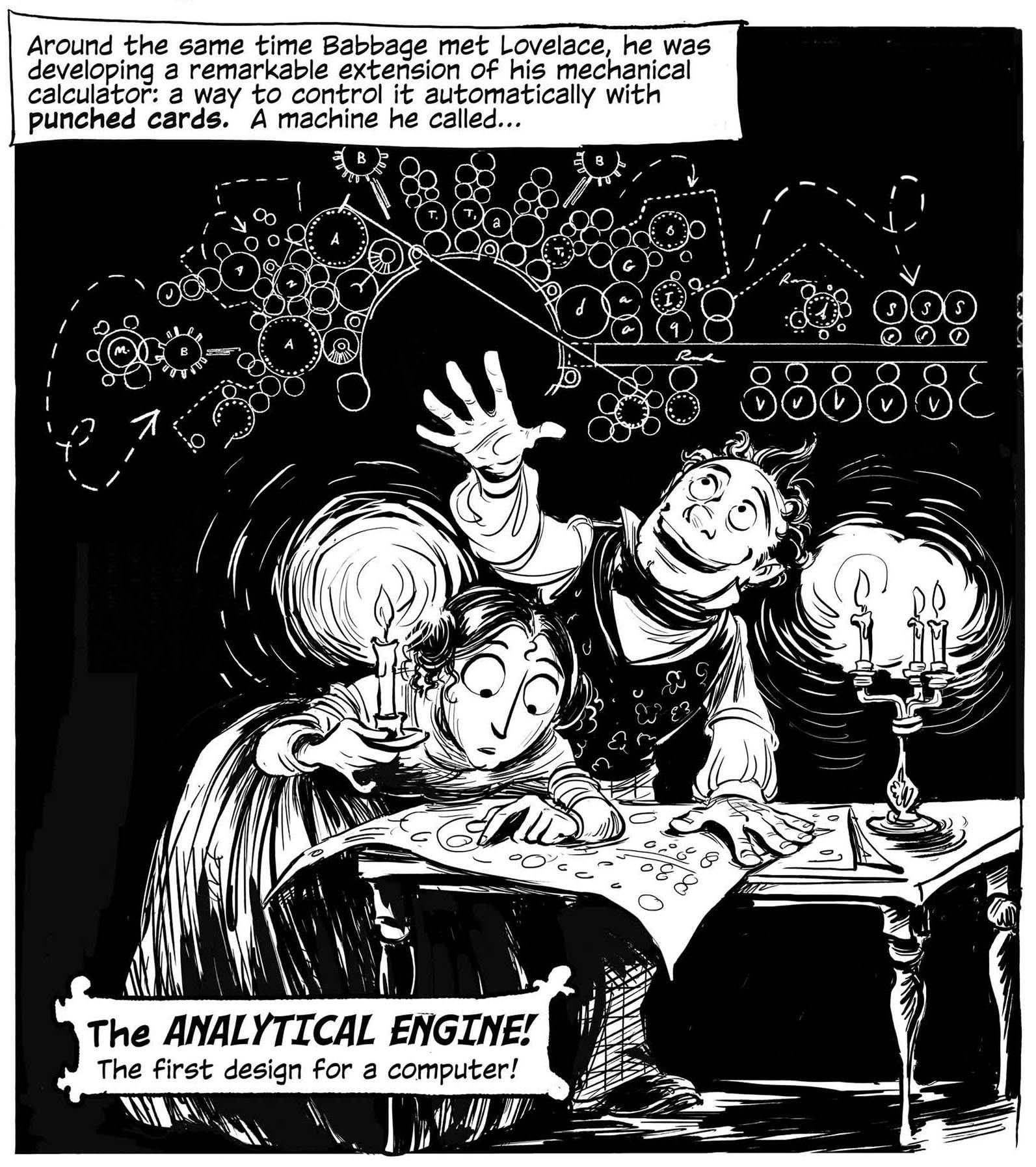You may have read about Ada Lovelace, the world’s first computer programmer, and Charles Babbage, father of the computer, in history books.
But you’ve never encountered the dynamic 19th-century duo like this before. The Thrilling Adventures of Lovelace and Babbage: The (Mostly) True Story of the World’s First Computer is a graphic novel from writer Syndney Padua.
Augusta Ada King (née Bryon), Countess of Lovelace, was the only legitimate daughter of the English poet, George Gordon, better known as Lord Byron. Babbage was the son of a banker. Both were talented mathematicians.
Unwilling to be chained down to the facts of the matter, Padua elected to tell their story on two levels, factual and imaginative. Among the instances in which imagination gets the job done are the meeting of a young Lovelace and Babbage at a party; the demonstration of Babbage’s difference engine to the queen; the “New Patent Mechanical Writer” (which only existed as a joke in a letter Babbage wrote to the British humor magazine Punch); and, finally, to quote Marks, “a chapter in which Ada struggles to get her arms around the concept of imaginary quantities, which sends her spiraling into an Alice-in-Wonderland world of judgmental footnotes and juries of Jacquard-loom punch cards…”
“I actually take the distinction between fact and interpretation extremely seriously,” Padua told the Daily Dot. “I tried as far as possible to have two sharply divided types of content. The footnotes and appendices are the strictly ‘true’ part—primary documents, as many and as unedited as I could cram them in, diagrams drawn off of Babbage’s plans so you could see how the actual machines worked, etc. The other part is the comics—caricatured personalities, expressionistic fantasias, and imaginary stories, stuff that was about how I felt about the people and the ideas. The book as a whole I guess takes place in the interaction between these two ways of understanding the world—the factual, which is in bits and pieces, diagrams and lists; and then the ‘story,’ which is how we string those together to find a meaning.”
The book can lead you to think about Anselm’s ontological argument for the existence of God. There is a kind of thrilling phasing of perception between the “real,” the fictive, the facts that are omitted, and the reality that the made-up impinges on. If that sounds indulgent, well, sometimes it’s nice to encounter a book that allows you to spend some time in contemplation instead of just flashing over the surface.
There is an aesthetic enjoyment to any “fiction” that phases from the fiction of realism to the reality of fiction, from urban fantasy and hard sci-fi to Manguel’s and Guadalupi’s Dictionary of Imaginary Places. It is a kind of intellectual surfing, demanding the mind keep up with the shifts from documentation to imagination and back.
Illustrations via The Thrilling Adventures of Lovelace and Babbage


